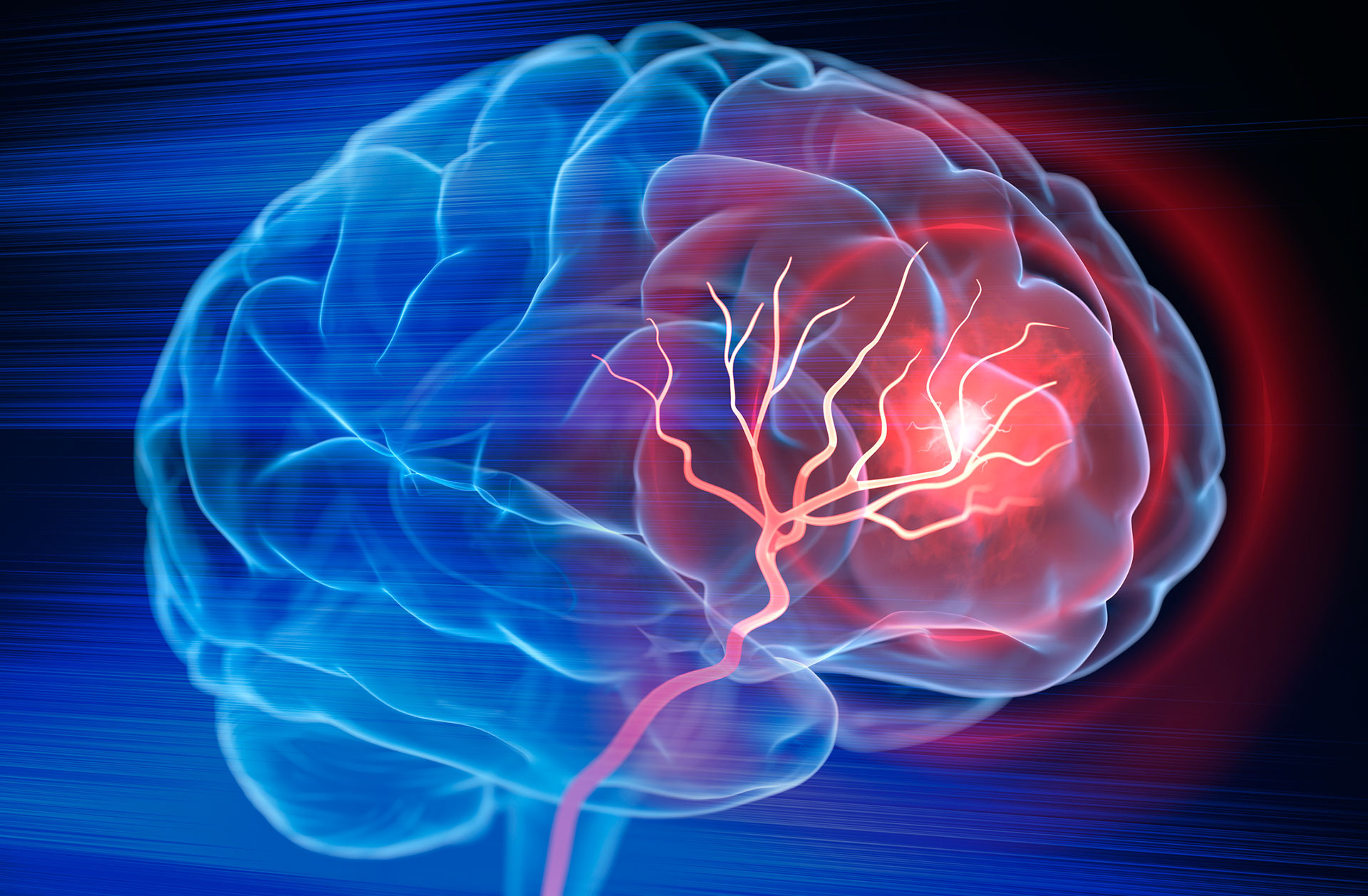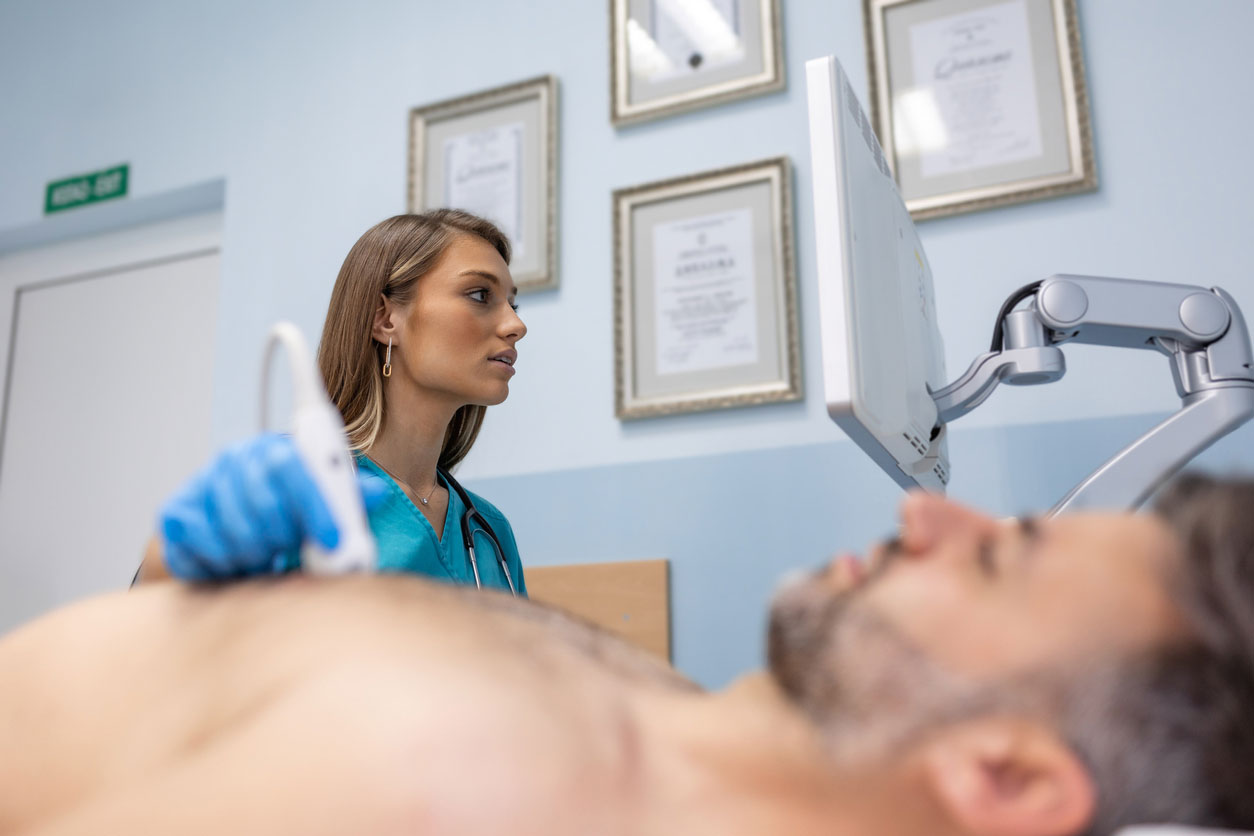
Stroke
Stroke
A stroke is one of the most common vascular diseases and a leading cause of disability in adults. It occurs when the flow of oxygen-rich blood to the brain is interrupted, damaging brain tissue and impairing function. A stroke is also called a cerebrovascular accident (CVA).
Depending on the location and extent of brain tissue damage, a stroke can affect a person’s ability to move, communicate, swallow, see, and more. A stroke usually affects one side of the brain, which corresponds to symptoms occurring on the opposite side of the body.
In some cases, a person may not be aware he or she has had a stroke – especially in the case of a transient ischemic attack (TIA), also referred to as a mini-stroke, in which symptoms are less severe and usually last no longer than 24 hours.
Think FAST to identify the signs and symptoms of a stroke:
- Face. Do both halves of the face look uneven? Is one side drooping? Ask the person to smile.
- Arms. Ask the person to raise both arms above the head. Does one arm drift downward?
- Speech. Are they having speech difficulties? Does their speech sound slurred or strange? Ask the person to repeat a simple phrase.
- Time. Prompt treatment is critical when it comes to a stroke. If the above signs of a stroke are present, seek medical attention immediately to improve a doctor’s chances of being able to reverse any damage.
Blood flow to the brain can be halted for any number of reasons, including a blocked artery, a blood clot that prevents blood and oxygen from reaching the brain, or a burst blood vessel (as the result of an aneurysm, for example).

Diagnosing a Stroke
In addition to a comprehensive physical exam and medical history evaluation, there are a number of tests your doctor may conduct in order to determine whether you or a loved one has experienced a stroke and to help pinpoint what may have caused it. Diagnosis is important because the faster a stroke victim receives treatment, the better the odds of relieving or reversing stroke symptoms.
Blood Tests
No single blood test can positively determine that a stroke occurred. Blood tests are typically used in conjunction with the presence of other signs and symptoms, imaging tests, and a patient’s health history or any related coexisting medical conditions.
Your doctor may order a number of blood tests, including:
- A complete blood count (CBC) to identify conditions associated with a stroke such as anemia or infection
- A blood chemistry test to check for high blood glucose levels (its symptoms can mimic a stroke; additionally, diabetes is risk factor for stroke)
- Blood lipid tests to check cholesterol levels
- Coagulation tests that can determine how quickly your blood clots because excessive bleeding and excessive clotting are both risk factors for stroke
Carotid Ultrasound
An ultrasound is a type of noninvasive imaging test that uses sound waves to create a picture of internal organs, including blood vessels.
A carotid ultrasound is used to specifically look at the carotid arteries – the two large blood vessels on either side of your neck that transport blood from the heart to the brain. This ultrasound can identify blood clots, plaque build-up in the arteries, or other problems with blood flow.
During the test, a vascular technician will place some gel on your skin and gently move a handheld device (transducer) over your skin. This test takes about 15 minutes to complete.

Echocardiogram
Much like an ultrasound, an echocardiogram uses sound waves that echo off different parts of the body to create an image. Echocardiograms focus on the heart and can be used to identify the possible source of a blood clot that may have traveled from the heart to the brain and caused a stroke.
In a transthoracic echocardiogram (TTE), a handheld transducer is positioned on the outside of the chest to create an image of the heart and its blood vessels.
In a transesophageal echocardiogram (TEE), a transducer is attached to an endoscope and passed through the esophagus to take pictures of the heart. This type of echocardiogram is typically used when the doctor cannot achieve good visualization with TTE.
Noninvasive Angiography
An angiogram creates images of the inside of blood vessels and is used to detect blockages or other circulatory problems.
A noninvasive angiogram can be performed with either magnetic resonance imaging (MRI) or a computed tomography (CT) scan. A contrast dye is injected into the patient’s bloodstream just prior to the imaging procedure.
A magnetic resonance angiogram (MRA) uses MRI technology (magnetic fields) to create the images, and can clearly detect damaged brain tissue. A CT scan, on the other hand, uses X-rays to create the images, and is really good at detecting current bleeding in the brain.
Minimally Invasive Angiography
During this outpatient procedure, a small incision is made and a tiny catheter is inserted into an artery in the leg or arm and guided with the help of X-ray technology to the location of the carotid arteries in the neck. A contrast dye is injected to help the blood vessels show up more clearly on the subsequent X-ray imaging. A similar procedure, intra-arterial digital subtraction angiography (IADSA), obtains the images electronically instead of with X-rays.
Using a catheter is valuable as it allows both diagnosis and treatment in a single procedure.
A cerebral angiogram may be ordered by your doctor if a previous test such as a CT scan reveals vascular abnormalities.
At Premier Vein & Vascular of Tampa and Largo, Florida, we offer specialized care for stroke patients. Find out how we can help by calling our vascular and cardiology experts at 1-888-VEINCARE, or use our convenient appointment request form.

